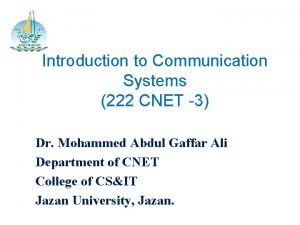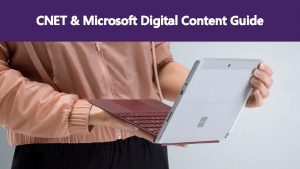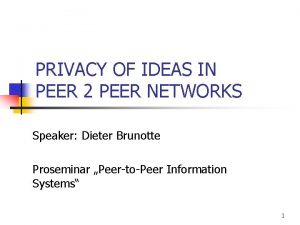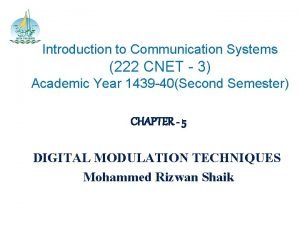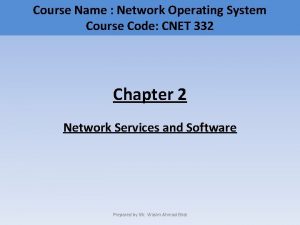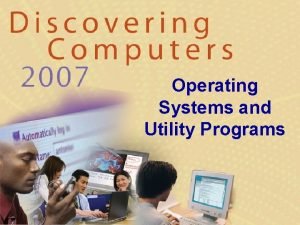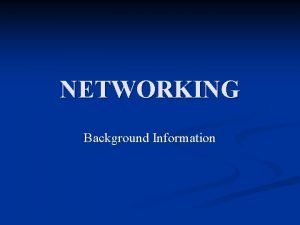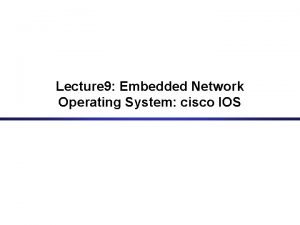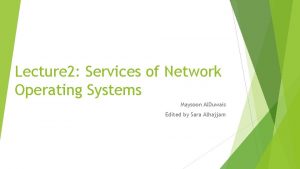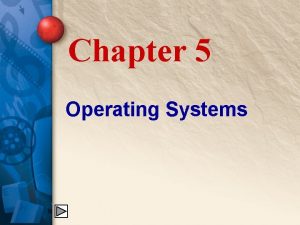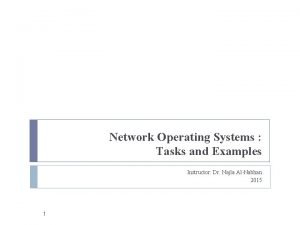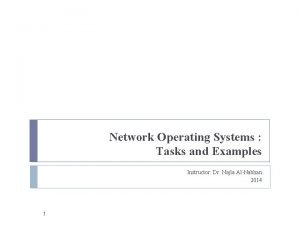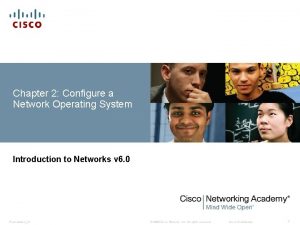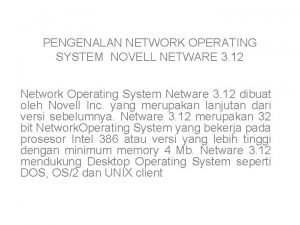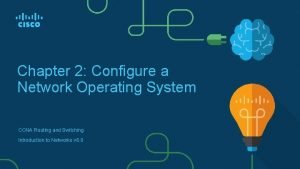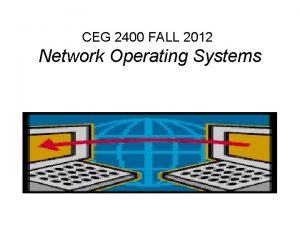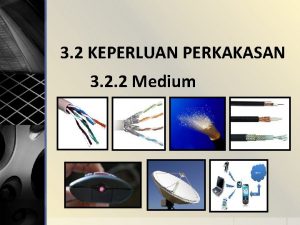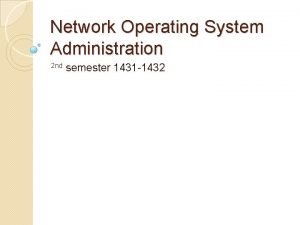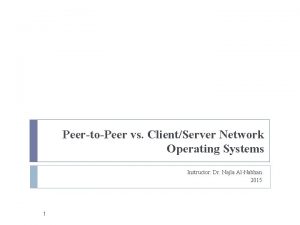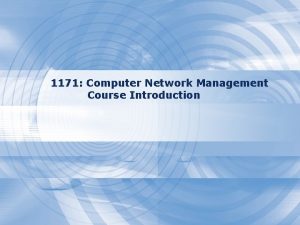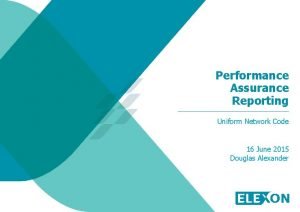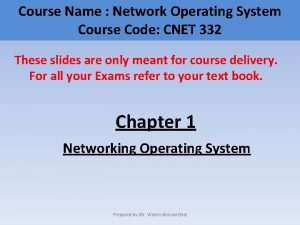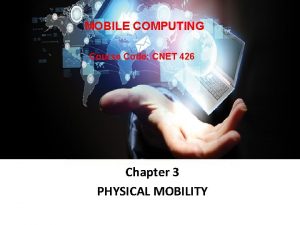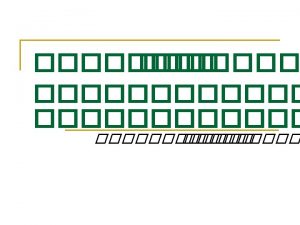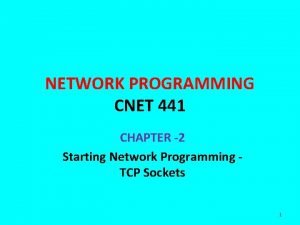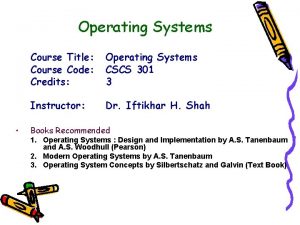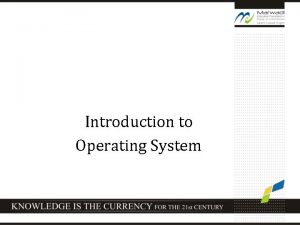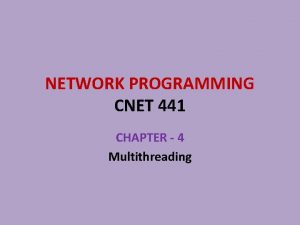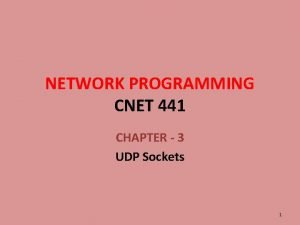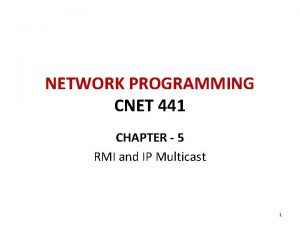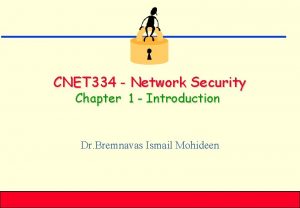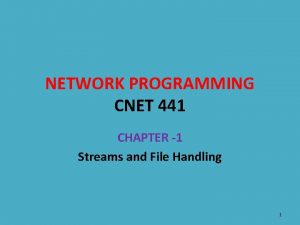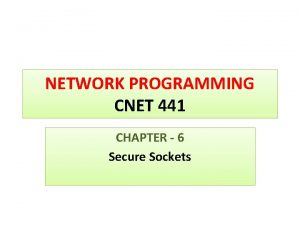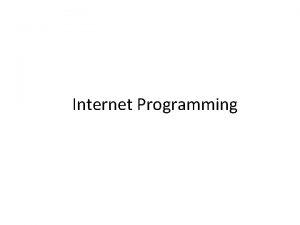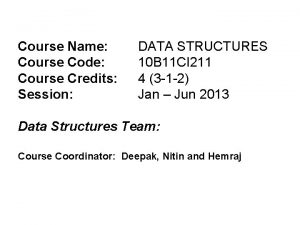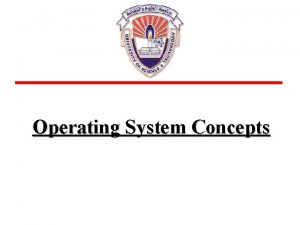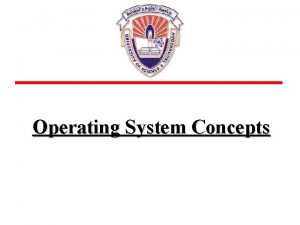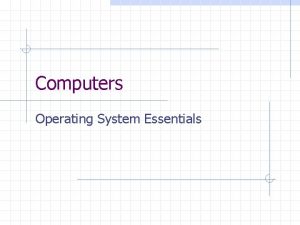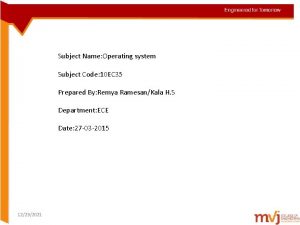Course Name Network Operating System Course Code CNET











































- Slides: 43

Course Name : Network Operating System Course Code: CNET 332 Chapter 2 Network Services and Software Prepared by Mr. Wasim Ahmad Bhat

Chapter 2: Objective • After Completing this chapter students will be able to understand the following: • Different Network Services offered by NOS. • Types of network operating systems with their architecture. • Configuring network clients. • Testing the connections. • Selecting NOS as per Organizations requirement. Prepared by Mr. Wasim Ahmad Bhat

Let us first Understand the term: Service • The term service to describe a resource that is made available to users on the network. • The term comes from the idea that the server computer provides a service to the workstations. • The service may be printing, accessing files, or running an application. • Example: The concept behind the use of a server is similar to the role of a waitperson in a restaurant: Please refer to your Text Book Page NO. 71 Prepared by Mr. Wasim Ahmad Bhat

Example : Prepared by Mr. Wasim Ahmad Bhat

Types of Network Services • A server can provide a variety of network services. • Some services are never seen by the user but influence the way the server functions. • Others affect how users carry out tasks over the network; we talked about several of these services • File services • Print services • Application services including databases and web servers • Messaging services in the form of e-mail and news. Prepared by Mr. Wasim Ahmad Bhat

There are many other services that are available with server software. Some of them are listed below: • Dynamic Host Configuration Protocol (DHCP) Services: – This service dynamically assigns an IP address to workstations that request to communicate on an IP. – DHCP largely eliminates the need for manual entry and avoids duplicate IP address conflicts. Prepared by Mr. Wasim Ahmad Bhat

Example: Click here to watch Video for DHCP Prepared by Mr. Wasim Ahmad Bhat

• File Transfer Protocol (FTP) Services • FTP Services Although using a web browser for file downloads has made FTP less common. • It is still used as a method for sending and retrieving files from a server using the TCP/IP protocol. • The FTP server, also called the FTP daemon (“deemun”) on UNIX systems, provides the service. • The FTP client software for downloading files is useless without the FTP server. Prepared by Mr. Wasim Ahmad Bhat

Example: FTP Services Click here to watch Video for FTP Prepared by Mr. Wasim Ahmad Bhat

• Virtual Private Network (VPN) Services • The combination of hardware and software that allows users and network administrators to access the internal network of the organization from any connection to the Internet. • Unlike remote access solutions that use modems and phone lines, VPNs help organizations reduce costs by lowering phone charges. • Some organizations do not use VPNs because the data, although encrypted, still must travel over the highly insecure network of the Internet. Prepared by Mr. Wasim Ahmad Bhat

Example: VPN Click here to watch Video for VPN Prepared by Mr. Wasim Ahmad Bhat

Choosing a Server • Usually, when we talk about a server, what we are referring to is the software that runs on a computer called a server, not the computer itself. • This software is the network operating system (NOS). • There are many different kinds of network operating systems available. • Although the underlying technology for each network • Operating system may be different, the basic services each provides are generally the same. Prepared by Mr. Wasim Ahmad Bhat

What to Look for in an NOS • Although different NOS software packages may provide similar services. • They may not all offer the same level of performance, flexibility, security, or scalability. • It is important to look for features that will meet the needs of your small business, school, or company while addressing the requirements of increased network demands. Prepared by Mr. Wasim Ahmad Bhat

Multitasking • The ability to perform several tasks simultaneously is called multitasking. • Some pieces of server software perform multitasking better than others using a process called pre-emptive multitasking. Prepared by Mr. Wasim Ahmad Bhat

Another Example on Multitasking Prepared by Mr. Wasim Ahmad Bhat

Multiprocessing • Multiprocessing improves performance by allowing you to add more CPUs to the same server computer. • You need to be sure your network operating system supports multiprocessing. Click here to watch Video for Multitasking and Multiprocessing Prepared by Mr. Wasim Ahmad Bhat

Let us Know Server Hardware • In addition to choosing a network operating system, you’ll need to consider the type of server computer that will best meet your needs. • Servers should be selected based on the following criteria: 1. Reliability The server is capable of providing continuous service in the event of a critical failure or increased demand. Prepared by Mr. Wasim Ahmad Bhat

Continue 2. Scalability As demand needs grow, the server can be upgraded to accommodate growth. 3. Fault tolerance The server minimizes the possibility of data loss by using a variety of hardware and software to recover from faults or failures. Note: The more reliable, scalable, and fault-tolerant a server is, the more it will cost. Adding these features to your server will increase its fault tolerance. Prepared by Mr. Wasim Ahmad Bhat

• Tape backup drive A tape backup drive uses software and hardware to backup data on the server. Prepared by Mr. Wasim Ahmad Bhat

• Multiprocessing A fast processor is important, but servers need to be able to add a second processor (or more) if performance demand increases dramatically. Prepared by Mr. Wasim Ahmad Bhat

• RAID (Redundant Array of Inexpensive Disks) Servers usually have two or more hard disks for storing data. • A RAID configuration includes hardware and software that protect data in the event one of the hard disks stops working. • Prepared by Mr. Wasim Ahmad Bhat

• Uninterruptible power supply (UPS) • The UPS is a battery backup system. • In cases when power is lost, the UPS provides temporary power so that the server can be shut down properly, avoiding any loss of data. Prepared by Mr. Wasim Ahmad Bhat

Types of Network Operating Systems • Most network operating systems provide the same basic functions. • Where one type of server software may offer ease of installation, another may be more stable. • Selecting the right server software requires knowing the needs of your organization. • Windows 2000 Server • Taking some of the best features of Windows 98, such as z. Plug and Play, and the well-known functions of Windows NT 4. 0 was just one part of Windows 2000. • Standard, Advanced, and Data Center, Each is designed to meet the particular demands of organizations. Prepared by Mr. Wasim Ahmad Bhat

Flavors of Windows Server: Prepared by Mr. Wasim Ahmad Bhat

Windows Server 2000 Editions: Prepared by Mr. Wasim Ahmad Bhat

Should You Choose Windows 2000? The advantages of using Windows 2000 Server are: • It’s easier to manage with improved management tools. • Fewer reboots are required when changing the configuration. • It provides improved hardware support with Plug-and-Play capability. • It has improved stability and uptime. • There is support to grow from a single processor server to large-scale servers. The disadvantages of choosing Windows 2000 Server are: • Proprietary technologies may limit flexibility. • There are high licensing costs for companies. • It is not as stable or as fast as UNIX versions. • It has high CPU, disk, and memory requirements. Prepared by Mr. Wasim Ahmad Bhat

UNIX • UNIX was originally developed in the 1960 s by Bell Laboratories at AT&T. • Berkeley Software Distribution UNIX (BSD UNIX or Free BSD). • Students at the University of California, Berkeley, developed BSD UNIX using the original software from AT&T. • They reprogrammed the entire operating system, creating their own OS. • Then they gave it away for free. • Eventually, several companies developed their own variants of UNIX based on BSD. • The list of UNIX flavors includes versions developed by the biggest computer software companies in the world: Sun Microsystems’s Solaris, Hewlett Packard’s HP-UX, IBM’s AIX, and (most recently) Apple’s OS X server. Prepared by Mr. Wasim Ahmad Bhat

UNIX CHRONOLOGY Prepared by Mr. Wasim Ahmad Bhat

• AT&T continued developing its version of UNIX: System V. The latest version, System V Release 4 (SVR 4), was jointly developed by AT&T and Sun Microsystems. Prepared by Mr. Wasim Ahmad Bhat

Should You Choose UNIX? • When you are selecting server software, UNIX should be a consideration if you have a network administrator who is experienced with UNIX. • • The advantages of using UNIX are: It’s a very stable operating system. It can function as a workstation or a server. It’s fast—very fast. It includes hundreds, possibly thousands, of built-in tools and applications, including programming tools. The disadvantages of using UNIX are: It’s complex and uses archaic commands—learning UNIX is often compared to learning a foreign language. The software can be very expensive (although BSD UNIX is free). Some companies sell versions of UNIX that will run only on their hardware. It includes hundreds, possibly thousands, of tools, applications, and commands. Prepared by Mr. Wasim Ahmad Bhat

Linux • Linux is a version of UNIX that was originally developed by Linus Torvalds at the University of Helsinki. • From the start, Linus made the software available for free to other UNIX programmers around the world. • Following the concept of the Open Source community. • Linux makes his code available for free to anyone who wants it, but in exchange, any changes that are made must be made available to the community. • The Linux source code can be downloaded from the Internet for free. Prepared by Mr. Wasim Ahmad Bhat

It’s not surprising why Linux is popular: • Linux runs on computers using Intel 386 or faster processors. • New applications are being developed for Linux all the time; most are free. • Linux itself is free. Prepared by Mr. Wasim Ahmad Bhat

Should You Choose Linux? The advantages of using Linux are: • It’s as easy to install as Windows XP, and takes less time. • Like UNIX, it’s fast and reliable. • It runs on PCs, Power. PCs, and SPARC stations. • It’s free online or for a minimal cost for a packaged product with CD. • Hundreds of free software applications are available for Linux. • Because the source code is available, bugs and security threats are fixed much faster than in any other NOS. The disadvantages of using Linux are: • It’s still UNIX, which means there are hundreds of commands and applications to learn. • Although Linux makes UNIX administration easier, it still requires a UNIX administrator. • Only a few companies offer dedicated tech support for Linux for a fee. • If you are relying on Linux as your primary server, then budget for phone support and an experienced consultant. • Linux is currently not considered a replacement for critical applications that require UNIX. Prepared by Mr. Wasim Ahmad Bhat

Novell Net. Ware • Net. Ware version 3. 11 was the dominant server software for file and print sharing. • Novell had managed to corner the growing market of client-server networks. • In the early 1990 s, Novell lost its lead to Windows NT Server. • Although Novell was deeply entrenched in the market, the Net. Ware product was designed for small networks that required only one server. • Novell introduced Net. Ware 4. 11 in 1995; • Its support for the TCP/IP protocol. • In 2001, Novell released Net. Ware 6. Building on Net. Ware 5, Net. Ware 6 comes with full support for TCP/IP improved support and functionality in its Internet applications. • Lightweight Directory Access Protocol (LDAP), which allows it to be integrated in to a mixed Net. Ware, Windows, or UNIX environment. Prepared by Mr. Wasim Ahmad Bhat

Prepared by Mr. Wasim Ahmad Bhat

Novell Directory Services (NDS) • Like Active Directory in Windows 2000, NDS organizes a network into a structure called the directory tree. Under NDS, a tree grows as objects are added to it. • Each object represents a user or device on the network—including a server, workstation, printer, or other network device. Prepared by Mr. Wasim Ahmad Bhat

Should You Choose Net. Ware? • The advantages of using Net. Ware 6 are: • It boasts an extremely stable network operating system. • Its open standards directory service, NDS, centralizes management of all network resources. • It offers management support for Net. Ware, NT, and UNIX servers. • It provides a Java-based management utility called Console. One that takes advantage of NDS (and is free!). The disadvantages of using Net. Ware 6 are: • Like UNIX, administering Net. Ware 6 from the server requires that the administrator learn many commands. • NDS can be more difficult to implement in large networks than non directory service based systems. • Net. Ware 6 is not as widely implemented as Windows 2000 or UNIX. Prepared by Mr. Wasim Ahmad Bhat

Mac OS X Server • It is UNIX with a Mac face. • Mac OS X Server, released in March of 1999. • The core of Mac OS X Server is based on two versions of UNIX: • BSD UNIX and Mach, a variant of BSD UNIX developed as part of the Mach Project at Carnegie Mellon University. • Apple has also made a good deal of the Mac OS X core software, called source code, available for free Like any version of UNIX. • OS X server can run almost any version of UNIX software that runs on the Mach kernel and Free. BSD. Prepared by Mr. Wasim Ahmad Bhat

Included in Mac OS X server are several standards-based applications, such as the following: Standards-based DNS, FTP, and DHCP. Apache Web server. Mail Server with Web. Mail. Network File Sharing (NFS) for exporting shared drives on other computers. • Directory services such as Windows, Novell, and UNIX, using Netinfo and LDAP. In addition, Mac OS X server supports these additional features: • A user-friendly management tool for all server applications, called Server Admin. • Seamless client support for all versions of Windows. • Quicktime streaming server for on-demand video for the Web. • Command-line access to all configuration features just like UNIX (available, but not required). • • Prepared by Mr. Wasim Ahmad Bhat

The most overlooked feature of Mac OS X Server is that you have a robust and scalable NOS that is tightly integrated and tested on Apple hardware. The advantages of using Mac OS X Server are: • It has improved server security using easy-to-use applications. • It’s based on the reliable BSD UNIX and Mach software. • It includes many standard Internet server applications, including Apache Web server. • It supports centralized management of Macintosh computers. • Its Open Directory architecture can be used for integrating user authentication and folders with UNIX, Novell, and Windows 2000 Active Directory. • A rack mount server, called Xserve, is now available and is only 1. 75 inches high. Prepared by Mr. Wasim Ahmad Bhat

The disadvantages of using Mac OS X Server are: • With a small user base, it’s less proven than other NOSs. • It does not support existing Macintosh Server applications. • The performance is limited to the hardware options available from Apple. Prepared by Mr. Wasim Ahmad Bhat

Let Us Answer Few Questions 1. 2. 3. 4. Why is multitasking important in a network operating system? How does multiprocessing improve performance on a server? What hardware is needed to create a fault-tolerant server? Explain the function of a domain controller in a Windows 2000 network. 5. Why is NDS (Novell Directory Services) of interest to network administrators and others responsible for managing networks? Prepared by Mr. Wasim Ahmad Bhat

END Prepared by Mr. Wasim Ahmad Bhat
 Cnet3
Cnet3 Content syndication ecommerce
Content syndication ecommerce Cnet
Cnet Cnet communication
Cnet communication Cnet ftp
Cnet ftp Busceral
Busceral Two os
Two os Network operating system examples
Network operating system examples Cisco router operating system
Cisco router operating system Define network operating system
Define network operating system Types of network os
Types of network os Network operating system example
Network operating system example Network operating system examples
Network operating system examples Configuring a network operating system
Configuring a network operating system Pengenalan network operating system
Pengenalan network operating system Configure a network operating system
Configure a network operating system Characteristics of network operating system
Characteristics of network operating system Keperluan perkakasan network operating system
Keperluan perkakasan network operating system Network operating system administration
Network operating system administration Clientserver network
Clientserver network Name a point that is collinear with the given points
Name a point that is collinear with the given points Buddy system memory
Buddy system memory File system in operating system
File system in operating system Ufs4.0
Ufs4.0 File system in operating system
File system in operating system Sailor course brick
Sailor course brick Course number and title
Course number and title Course interne course externe
Course interne course externe Acn ride
Acn ride Network management syllabus
Network management syllabus Course code
Course code Wveis course code manual
Wveis course code manual Course code example
Course code example Hr portal dpcdsb
Hr portal dpcdsb Cricos course code deakin university
Cricos course code deakin university Hre course code
Hre course code Wveis course code manual
Wveis course code manual Comparison of virtual circuit and datagram networks
Comparison of virtual circuit and datagram networks Network topology in computer network
Network topology in computer network Features of peer to peer network and client server network
Features of peer to peer network and client server network Network systems design using network processors
Network systems design using network processors Network centric computing
Network centric computing Advantage and disadvantages of packet switching
Advantage and disadvantages of packet switching Uniform network code
Uniform network code
